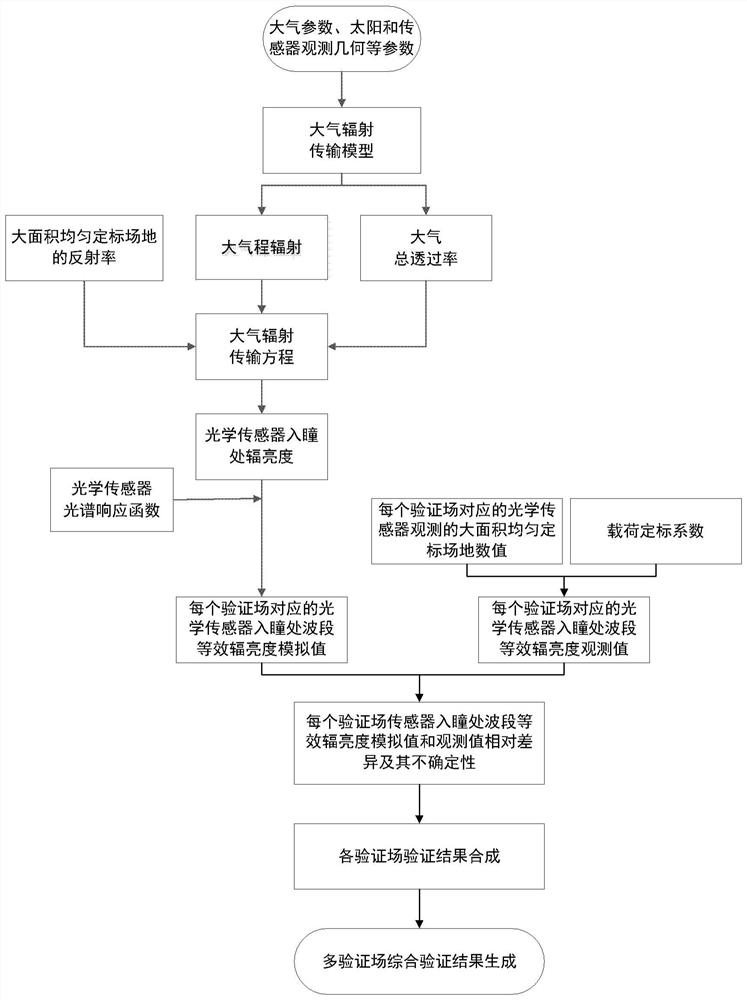Method for verifying on-orbit absolute radiometric calibration result of optical load
An absolute radiometric calibration and calibration technology, applied in the field of remote sensing, can solve the problems of single test target, inconsistent measurement reference, and limited accuracy of ground-based verification, achieve good atmospheric permeability, improve the accuracy of ground-based verification, and eliminate single field Effect of Single Observation Error
- Summary
- Abstract
- Description
- Claims
- Application Information
AI Technical Summary
Problems solved by technology
Method used
Image
Examples
Embodiment Construction
[0032] In order to make the object, technical solution and advantages of the present invention clearer, the present invention will be described in further detail below in conjunction with specific embodiments and with reference to the accompanying drawings.
[0033] figure 1 It is a flowchart of a method for verifying the results of on-orbit absolute calibration of optical payloads according to an embodiment of the present invention, figure 2 It is a specific flow chart of the multi-test field comprehensive verification method for the optical load on-orbit absolute radiation calibration result of the embodiment of the present invention. The method includes the following steps:
[0034] Step A: Select the calibration field on the underlying surface based on the target characteristics of the calibration field and the atmospheric measurement data;
[0035]The first step of the multi-test field comprehensive verification method for the on-orbit absolute radiometric calibration r...
PUM
 Login to View More
Login to View More Abstract
Description
Claims
Application Information
 Login to View More
Login to View More - R&D
- Intellectual Property
- Life Sciences
- Materials
- Tech Scout
- Unparalleled Data Quality
- Higher Quality Content
- 60% Fewer Hallucinations
Browse by: Latest US Patents, China's latest patents, Technical Efficacy Thesaurus, Application Domain, Technology Topic, Popular Technical Reports.
© 2025 PatSnap. All rights reserved.Legal|Privacy policy|Modern Slavery Act Transparency Statement|Sitemap|About US| Contact US: help@patsnap.com



